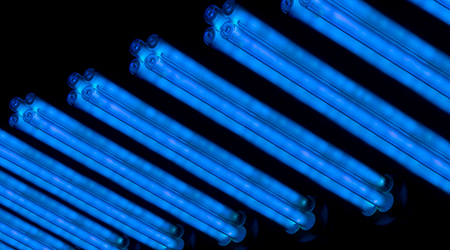No technology has received more scrutiny in the battle against COVID-19 in healthcare facilities than UVC light. Now, researchers have identified a specific type that addresses one of the key drawbacks of traditional UVC technology.
One proposed solution to the spread of aerosolized infection in indoor spaces is far-UVC radiation, which inactivates harmful bacteria and viruses – including COVID-19 – with minimal to no risk to humans in the path of the radiation, according to Health Europa.
The most commonly used UVC devices are the mercury-vapour arc lamps that emit 254nm UVC. However, this type of UVC radiation is damaging to people and therefore can only be employed in unoccupied regions of a room or in shielded devices and ventilation systems.
Recent studies have shown that a specific UVC wavelength between 207nm and 222nm — the far-UVC range — cannot penetrate the human corneum or ocular tear layer. So unlike standard UVC, it is not carcinogenic or cataractogenic and can be safely used around humans in occupied rooms. In particular, it can be used to suppress COVID-19 transmission through aerosols and can reduce the risk of spread in enclosed environments, particularly those with poor ventilation.

 Building Sustainable Healthcare for an Aging Population
Building Sustainable Healthcare for an Aging Population Froedtert ThedaCare Announces Opening of ThedaCare Medical Center-Oshkosh
Froedtert ThedaCare Announces Opening of ThedaCare Medical Center-Oshkosh Touchmark Acquires The Hacienda at Georgetown Senior Living Facility
Touchmark Acquires The Hacienda at Georgetown Senior Living Facility Contaminants Under Foot: A Closer Look at Patient Room Floors
Contaminants Under Foot: A Closer Look at Patient Room Floors Power Outages Largely Driven by Extreme Weather Events
Power Outages Largely Driven by Extreme Weather Events